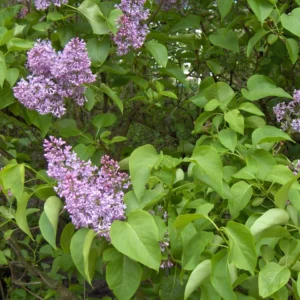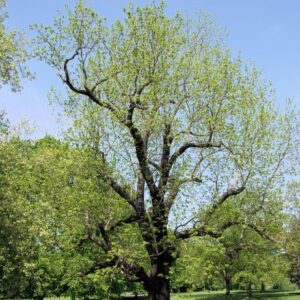Description
Mountain Ash (Sorbus americana) Dogberry 1 Yr Old Seedling
Overview
The American Mountain Ash (Sorbus americana), also known as Dogberry in some regions, is a small, deciduous tree celebrated for its ornamental clusters of vibrant red berries and delicate compound leaves. This hardy tree is perfect for enhancing any garden or landscape with its year-round appeal, from its spring blossoms to its colorful autumn foliage and winter berries. Its berries also provide an essential food source for birds and wildlife, making it a great choice for eco-friendly gardeners.
Mountain Ash Native Range
The American Mountain Ash is native to the northeastern United States and Canada, thriving in forests, rocky slopes, and open areas in cool climates.
Growth and Form
- Height: Reaches 15–30 feet at maturity.
- Spread: A canopy spread of 10–20 feet.
- Growth Rate: Moderate, growing about 12–18 inches per year.
- Foliage: Pinnately compound leaves with fine-textured leaflets, turning yellow to reddish-orange in the fall.
- Flowers: Creamy white clusters appear in spring, attracting pollinators.
- Berries: Bright red, persistent clusters of berries ripen in late summer and remain through winter.
Ecological Benefits
- Wildlife Habitat: Berries are a valuable food source for birds, including waxwings and robins, as well as small mammals.
- Pollinator Friendly: The tree’s spring flowers attract bees and other pollinators.
- Soil Health: Its deciduous nature enriches soil with organic matter as leaves decompose.
Mountain Ash Hardiness and Climate Tolerance
- Hardiness Zones: 2–6, ideal for cooler climates.
- Cold Tolerance: Extremely hardy, tolerating cold temperatures as low as -40°F (-40°C).
- Soil Preferences: Thrives in well-drained, slightly acidic soils but adapts to a variety of conditions.
- Light Needs: Prefers full sun to partial shade.
Planting and Care
- Planting Location: Plant in areas with good air circulation and access to sunlight for optimal growth.
- Watering: Keep soil consistently moist during the first few years. Once established, it is moderately drought-tolerant.
- Fertilization: Apply a balanced fertilizer in early spring to encourage strong growth.
- Pruning: Prune dead or damaged branches in late winter to maintain a healthy shape.
Uses
- Ornamental: Ideal for residential yards and public parks due to its compact size and striking seasonal interest.
- Wildlife Support: Great for creating a bird-friendly garden.
- Cultural Significance: Known as Dogberry in Newfoundland, it holds historical and cultural value in the region.
Potential Problems
- Pests: Susceptible to occasional aphid infestations or sawfly larvae.
- Diseases: Watch for fire blight or rust in humid conditions.
- Maintenance: Regular pruning and monitoring can help prevent issues and maintain vigor.







Reviews
There are no reviews yet.